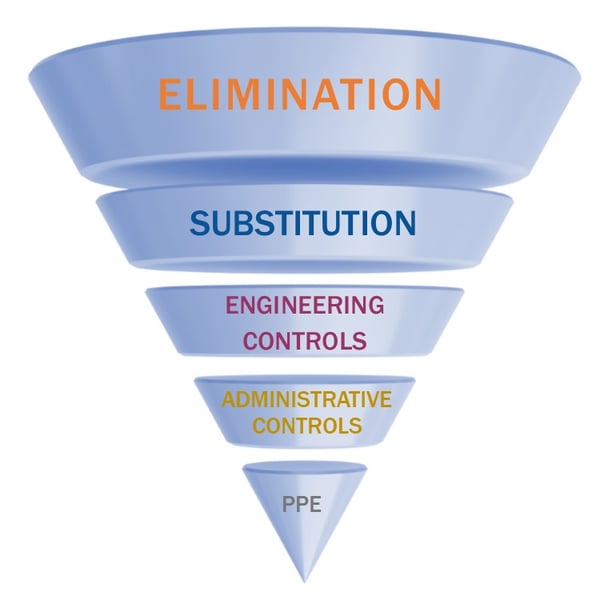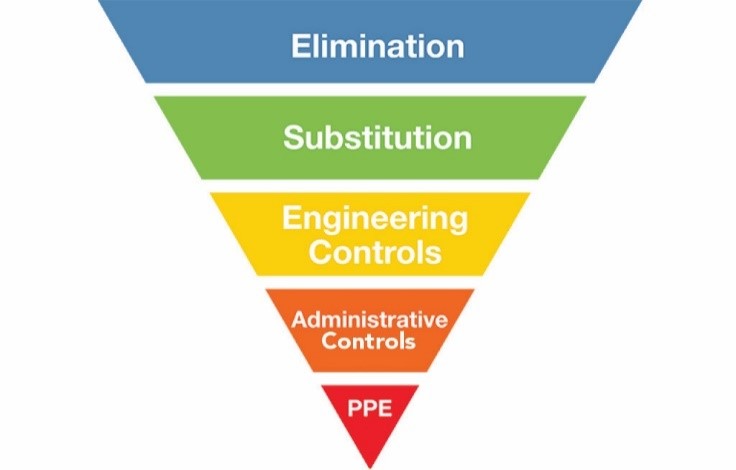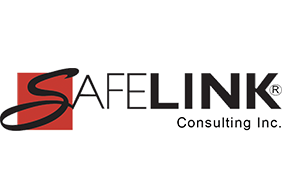Identifying hazards and exposures to occupational hazards and then mitigating that risk before work begins should be the goal of all safety and health professionals. A great way to achieve this is to utilize the hierarchy of hazard controls.
The hierarchy starts with the controls perceived to be most effective and moves down to those considered least effective. As defined by NIOSH, it flows as follows:
Elimination – Physically remove the hazard
Substitution – Replace the hazard
Engineering controls – Isolate people from the hazard
Administrative controls – Change the way people work
Personal protective equipment – Protect the worker with PPE

Collaborate to eliminate or substitute
After hazards are identified, an employer must take action to eliminate or minimize the hazards. The best source for determining how to do this is by gathering together the individuals who are involved in all of the aspects of the job or task. Brainstorming is a valuable tool that can be used to receive input from workers. If a hazardous chemical is the problem, then include not only the workers who use the chemical but also the individuals who have selected the chemical for the purpose. Perhaps there’s a chemical that can be a good substitution for the hazardous chemical.
NIOSH states that elimination and substitution is often more difficult to enact after work has begun. The goal of substitution is to replace a hazardous product or process with a safer one. Examples include using non-toxic or less toxic chemicals and upgrading aging machinery with newer equipment.
Explore options for engineering controls
NIOSH identifies numerous hazards for which engineering controls can be effective. They include noise, falls, silica, aerosols, asphalt fumes, formaldehyde, hazardous drugs, lead, asbestos, carbon monoxide and nitrous oxide.
Engineering controls can range from sharps safety devices to providing better local exhaust ventilation to remove airborne emissions. Machine guards and shields are also common engineering controls used to prevent contact with workers with flying debris during grinding operations.
“Well-designed engineering controls can be highly effective in protecting workers and will typically be independent of worker interactions,” NIOSH states. “They typically do not interfere with worker productivity or personal comfort and make the work easier to perform rather than more difficult.” The challenge to the employer is to ensure that adequate training has been provided to the workers who are to use the engineering controls and then monitoring and enforcing the use of these controls.
Consider administrative controls
Administrative controls limit exposure to hazards by adjusting work tasks or schedules. According to OSHA, examples include:
- Limiting the time a worker is exposed to a hazard
- Creating written operating procedures
- Installing alarms, signs and warnings
- Using a buddy system
- Implementing a job/task rotation system
Administrative controls begin with determination of how tasks are performed and then evaluating if there are safer options available to perform them. An example could be that a worker is holding an object in order to spray it with a chemical that presents a skin absorption problem. Discuss with the workers if there is a way that a device can hold the item in place rather than the worker’s hand.
Use Personal Protective Equipment
OSHA states that use of PPE is to be considered as the last line of defense against worker injury and illness. In other words, the use of engineering and administrative controls have been considered but won’t minimize or eliminate the hazard. Personal protective equipment (PPE) can include gloves, face and eye protection, clothing, respirators, and hard-toed boots.
The employer must evaluate the hazard and then ensure that the PPE is appropriate for the use intended. An example if gloves are required, then the glove must protect against the chemical or heat that requires the protection for the worker. Eye protection should be rated to be impact-resistant for instance if it is to protect against flying objects/debris that could shatter the eyewear. An ANSI rating helps verify that the eyewear has been tested for the applicable protection. NIOSH rates respirators, therefore, an employer should verify through those ratings that the respirator provides protection from the hazardous dust or fume.
Providing PPE is not enough to comply with OSHA. Workers must be trained on when to use the PPE, how to don it, when to replace it, and how to store and dispose of it. Documentation of this training should be a part of workers’ training records.
Summary
Following this hierarchy of controls can make your workplace a safer place for your workers.
Need a Health and Safety Manual for your business? Contact us for customized programs.
Learn more on how you can train and protect your employees on health & safety.
Learn more about what SafeLink Consulting can do to help your business with compliance services, including safety compliance, to meet OSHA training requirements and quality system consulting to meet FDA compliance. SafeLink Consulting assists businesses with workplace safety training, infection control training, HIPAA training online, quality systems, assessments, audits, due diligence, and more.
Industries include:
Dentistry compliance - assisting the dental practice with meeting requirements for OSHA, HIPAA, EPA, and CDC guidelines, patient safety and employee health & safety
Dental Laboratory compliance - assisting the dental lab with meeting requirements for OSHA, FDA, and CDC guidelines, employee health & safety, plus FDA requirements for lab manufacturing custom implant abutment /gmp for medical device manufacturers
Medical Device Manufacturers compliance - assisting with meeting OSHA compliance & FDA requirements, GMP - good manufacturing practices
General Industry compliance - assisting with OSHA compliance and FDA compliance as it pertains to the specific business
Beverage Industry compliance - assisting beverage businesses such as the craft brewery, winery, cidery, distillery, vintner with meeting OSHA compliance, health & safety, FDA requirements / GMP - Good Manufacturing Practices.
Get notification when new regulatory compliance training courses are added plus upcoming events by subscribing to our email news.








Leave Comment